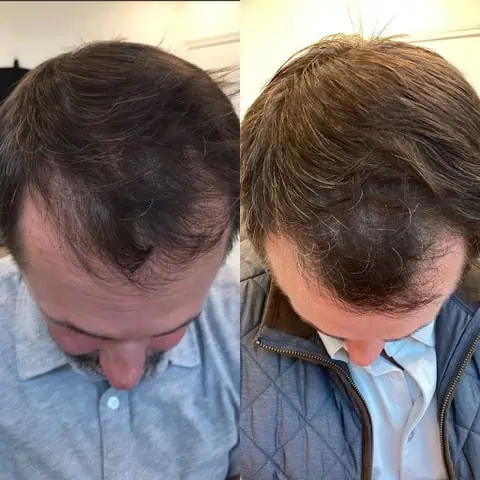Hair Restoration Treatment
- Home
- / Services
- / Hair Restoration Treatment

Hair Restoration Treatment
Hair restoration is a comprehensive term that refers to various methods of addressing hair loss. These methods include medical treatments, surgical procedures such as hair transplants, and non-surgical options like laser therapy or topical treatments. Hair restoration aims to improve the density and appearance of hair. Treatments target areas of thinning or baldness, primarily on the scalp, but also for facial hair like beards or eyebrows.
Hair Restoration Treatment in West Des Moines, IA, is designed for individuals experiencing hair thinning or loss seeking to regain hair fullness and enhance their overall appearance. This service suits men and women with noticeable hair thinning or loss patterns. Many patients see improvements within a few months, depending on the type of treatment chosen and the individual’s condition. The longevity of the results also varies, with surgical options generally offering more permanent solutions, while non-surgical treatments may require ongoing sessions. Book an appointment today at Aesthetic Collective in West Des Moines, IA, to address hair loss effectively.

Benefits of Hair Restoration
- Enhances hair density
- Boosts confidence
- Can treat both scalp and facial hair loss
- Offers both non-surgical and surgical options
- Improves the overall appearance of hair
- Long-lasting results with surgical options
- Immediate improvements with some non-surgical treatments
- Customizable to individual needs
- Advanced technologies provide safer procedures
- Minimally invasive options available
FAQ's
Good candidates are those experiencing hair thinning or loss and generally healthy. Ideal candidates have sufficient hair density at the donor site for transplants.
Results vary based on the treatment method. Non-surgical treatments may show effects within weeks, while surgical options typically take several months to yield visible improvements
Surgical hair restoration can provide permanent results, whereas non-surgical methods may require ongoing treatments to maintain the effect.
Surgical treatments may involve some downtime and carry typical surgical risks like infection. Non-surgical options generally have minimal to no downtime.
Before any procedure, avoid medications that can increase bleeding. After treatment, follow specific care instructions, including taking prescribed medications and avoiding certain physical activities.
Treatments vary; surgical options involve transplanting hair, which can take several hours, while non-surgical treatments, like topical applications or laser therapy, are generally quick and involve minimal discomfort.